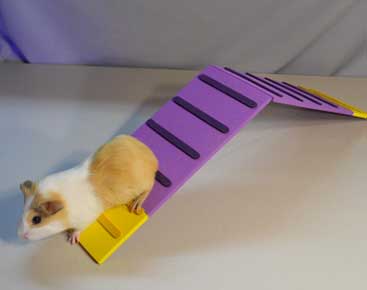You love your guinea pig and want him (or her) to have everything – safety, love, companionship. But what about entertainment?
No one wants to be bored! So you start to think about providing some guinea pig toys. Do they play with toys? Should you spend money on commercial guinea pig toys? What are some ways to make your own free (or cheap) guinea pig toys? Here’s the low-down on guinea pig toys.
First off, if do not have the time to make your own guinea pig toys, feel free to check out an article I wrote about the best guinea pig toys money can buy.
Check the Basics First
Most guinea pig owners already know, but it’s worth mentioning anyway: Make sure the basics are met first! Ensure your guinea pig is happy by making sure:
He has plenty of space.
Is his cage roomy enough? Does he get free-roam time on a regular basis? In the warm months, does he get an opportunity to go outside, explore, experience fresh air and fresh (pesticide-free) grass? No guinea pig was meant to spend his life cooped up in a small cage. Make sure yours has space and new experiences regularly. If you think it’s time to upgrade your cage but don’t want to spend $100+ dollars, take a look at some ideas on making your own.
He has regular companionship
Guinea pigs are herd animals in the wild, and although the domestic breed is a bit different genetically from its wild cousins, it still needs a social life. Ideally, he or she needs a guinea pig companion. If you have a solitary guinea pig, now’s the time to really consider getting another one. Just make sure it’s the same sex! If you simply can’t have two, make sure you give him (or her) plenty of one-on-one attention each day.
His Diet is Ideal
Is fresh grass hay always available? Is he getting plenty of fresh fruits and vegetables? Is his pellet food fresh and not expired? Are you sure he’s getting enough Vitamin C in his diet? Check out our infographic for ideal diet tips at-a-glance.
His Environment is Kept Clean
Sometimes people get guinea pigs for their children, and then assume that the child will take care of the guinea pig. But then the cage goes uncleaned for weeks at a time. Old, chewed toys are not inspected or replaced. Take a fresh look and make sure your guinea pig’s area is clean, and that worn items are removed or replaced as soon as wear and tear starts to show.
Do Guinea Pigs Use Toys?
We’ve all seen funny videos featuring cats and dogs playing with toys. So what about guinea pigs? Do they play with toys? Well, luckily for us guinea pig owners, guinea pigs are a lot like small children – they are easily amused by small, simple items.
If you are a parent, you’ve probably noticed how small children are amused with pretty much anything. As they get older, though, the toys they like become fancier and a lot more expensive. With guinea pigs, you can easily keep them amused with simple, inexpensive items that, quite often, you can create yourself. Guinea pigs do, in fact, use toys. Guinea pigs each have different personalities, though, so while one guinea pig may love playing with a small ball or a stuffed animal, another might disregard them completely.
Make Your Own Guinea Pig Toys
Most of the toys that interest guinea pigs have to do with eating, chewing, hiding, or exploring – the things guinea pigs love to do most of the time. Here are toys you can create yourself to provide some stimulation and fun into your guinea pig’s life without spending your hard-earned money.
1. Variations on “Hide the Food” Guinea Pig Toys

There a lots of variations of toys where you can hide fruit, vegetables or hay in something and then let your guinea pig play with it to extract the goodies. This variation is easy to make: Take a toilet paper roll, cut it into 3 slices, stick a piece of fruit or some veggies (or use hay) inside, then let your guinea pig play with it to get the food out.
Another “hide the food” toy variation. Take hay (or fruit or veggies), stick them in a small paper bag, and loosely tie it at the top with a non-toxic string. Have fun watching him play with it to get the food out.


Another “hide the food” toy variation. Take a piece of fruit (or hay or veggies), tie it onto a non-toxic string, and attach it to his cage. Guinea pigs are able to stand on their two hind feet, so make sure it’s just high enough where he can reach it. It’s no fun at all if it’s too high and he can’t get to it no matter how hard he tries!
Another “hide the food” toy variation. Similar to the toilet-roll-ball (#1 above), this one involves stuffing a paper towel roll with hay. To use fruits or veggies instead, make sure you stuff crinkled up paper in the ends so they’ll have to work to get the food out.

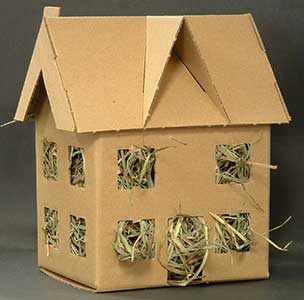
Another “hide the food” toy variation. Want something a little more elaborate that takes a bit longer to get the food out? Take some cardboard and create a house – or let your imagination run wild and create something else. But you don’t want to use tape or glue to put the pieces together. Instead, when you cut out your cardboard pieces, make little tabs that can be folded down. You can use these tabs to insert one piece into another and get it assembled without using adhesives. Not quite creative? Use free online templates.
You don’t have to use cardboard. Anything that’s durable and non-toxic can be used as a “hide-the-food” toy. Here is a toy made by sticking baby carrots into a wiffle ball.


It doesn’t get any simpler than this! Take some hay, or a piece of vegetable or fruit, put it in a paper bag, fold the ends a few times, and voila – instant guinea pig toy!
2. Variations on “Chewing” Guinea Pig Toys
Guinea pigs teeth always grow – and they never stop growing. Guinea pigs must chew to keep their teeth worn down. Overgrown teeth can create major health problems, can prevent a guinea pig from being able to eat properly, or even grow through the roof of their mouth. Providing toys that help a guine pig chew is a great idea. Here are some ideas for homemade chew toys.

Children’s blocks make good chew toys for guinea pigs because they are usually non-toxic. They are too big to choke on, are just the right size for guinea pig mouths to chew on, and add color and texture to his environment.
Whether or not it’s a good idea to use pine cones for a guinea pig chew treat has been debated for a while among guinea pig owners. Here are the facts you need to know to make your own decision whether to use pine cones for a chew treat:
- There are 115 species of pines, and 36 are native to the US
- Pine cones contain sugars (polysaccharaides), tannins whose extracts have been found to exhibit antibacterial, antiviral, and antitumor properties, monoterpenes, lignins, and diterpinoid resin acids.
- Squirrels eat pine cones, although some people say they only eat the seeds from the pine cones.

Anyway, I see no harm in providing a guinea pig a pine cone to chew on. Some owners say the sharp pointy edges might be harmful, but I think animals understand what is good or harmful, and they won’t touch it if they find it harmful. That’s my opinion, however. There are guinea pigs who chew on pine cones and have no problems. Some people advocate sterilizing the pine cones first by baking them in an oven on low heat (under 250 degrees F) for 20-30 minutes to remove any insects or sap.
I found no evidence anywhere that says baking pine cones sterilizes them or changes their chemical composition in any way. So, in conclusion, whether you choose to provide pine cones as a chew toy or not is completely up to you. My guinea pigs have chewed on pine cones and suffered no ill effects. Be careful, though. Pine cones sold for crafts are often treated with chemicals or have “scents” added to them. Stay away from those!

Sticks are great chew toys. You can just provide them as-is, or arrange them into a tree by sticking them in a cardboard tube. Safe woods include apple, crabapple, pear, hazelnut, oak, maple, willow (avoid white willow), linden, basswood, and elder. Make sure the wood is untreated, pesticide-free, fungus-free, and bug-free. Don’t give twigs from pine, cherry, almond, nectarine, peach, plum, or cedar trees. They can be toxic.
Dowel Rods are great chew toys. Again, You can just provide them as-is, or use them to craft your own unique toys. To make a dumbbell chew toy, take two slightly larger pieces of wood for the dumbbells, carve or drill a hole in them that is the same diameter as the dowel rod, and then insert your dowel rod into each dumbbell. Make sure it’s not treated with chemicals, of course.


If you have the tools, you can take safe wood (see above), drill holes in it, then stuff it with hay. You can drill the holes with a regular drill using a spade bit.
Spool Toys are cheap and easy to make. Make sure the spool is a BIG spool so the guinea pig can’t choke on it – at least 2 inches big. Thread a non-toxic string through the spools to connect them together, tying a knot after each one. Be sure to use a natural-fiber string, like hemp or twine. Never use leather strips.

3. Variations on “Hiding” Guinea Pig Toys
Guinea pigs are prey animals. In the wild, there are lots of creatures who want to hunt them and eat them. As a result, guinea pigs have adapted to running away and hiding, and they need a hidey place to feel safe. Here are some cheap, easy ideas for hidey toys that you can make for your guinea pig.
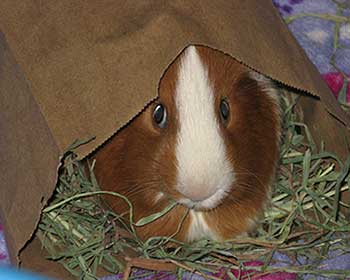
A plain brown paper bag is a simple but fun hidey toy for your guinea pig. You can cut out the back end to create a paper tunnel, or just leave it as is. Put some hay or other treats inside to entice him even more.
Newspaper is another cheap and simple – but fun – guinea pig toy. Take a whole newspaper and make a tent, or shred it and let him roll around in it.

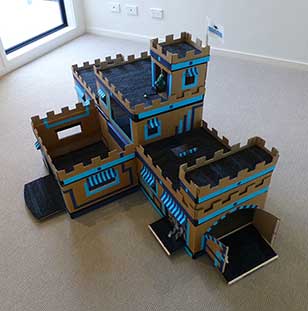
Cardboard boxes are versatile hidey toys. You can simply cut out a hole for him to crawl into the box and let him play that way, or you can get wild and creative and build houses, tunnels, covered mazes, and more. The possibilities are endless with cardboard boxes.
Step Stools make great hidey toys. You can use plastic or untreated wood step stools (if you can find one!) If using wood, it might be better to use untreated wood and build your own. That way, you know it’s untreated.
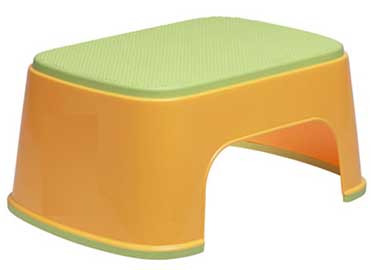

Soda Pop Cartons make great hidey tunnels. You can use them as is (with one end cut open, of course), or you can cut out both ends for a walk-through tunnel. Take several and combine them for even longer tunnels. Just be sure not to use adhesives. Cut them to make tabs that can then be used to attach one carton to the next.
Another variation is to just use round cardboard tubes, like the kind oatmeal comes in. Same as with the soda pop cartons, you can use them singly or pair them together to create a long tunnel. You can get a little more creative and cut them so that you have arched bridges to go with your tunnels.

4. Mazes & Obstacle Courses – Loads of Fun
Scientific studies have shown that guinea pigs are great at navigational tasks. Once they get through a complicated maze to find food, they will remember their path to reach the food for months. Be creative, have some fun, and build your guinea pig a maze or an obstacle course, then watch as he finds his way through.

One way to create a maze is to use whiteboard. If you use tape or adhesives of any kind to assemble your maze, make sure you only use it when you’re actively watching your guinea pig. You don’t want to leave piggy unattended only to find out later that he chewed and ingested some tape or glue!
Another way to create a maze is to just use good old cardboard. It’s easier to build a maze from cardboard without having to use adhesives or tape. You can interlock pieces with slits or tabs.


When you create a maze out of whiteboard or cardboard, it can get kind of difficult to mix it up and change it around. So another option is to build a maze by stacking up all those old VHS tapes you have laying around. Use the VHS tapes for the walls, put a treat at the end, and have fun watching your cavy find his way through.
If you have lots of Legos and lots of time, you can create a guinea pig maze out of Legos (or other building toys). If you do, please come back and share a picture of your creation!

Instead of just creating a simple maze, you could step it up a notch and insert elements to make it more interesting. Take ideas from all the other toys listed here and create barriers to turn your maze into a bona fide obstacle course. Use cardboard to create arches that he has to go over or tunnels that he has to crawl through. Put objects in the path that he has to step over or go around. Take a rectangular piece of cardboard, set it on top of a paper towel roll, and make a teeter totter that he has to traverse to continue through the maze.
